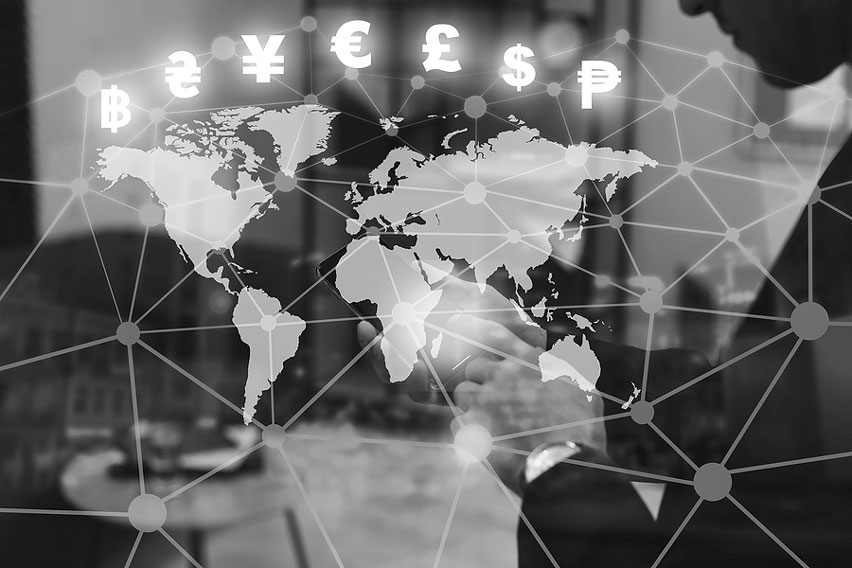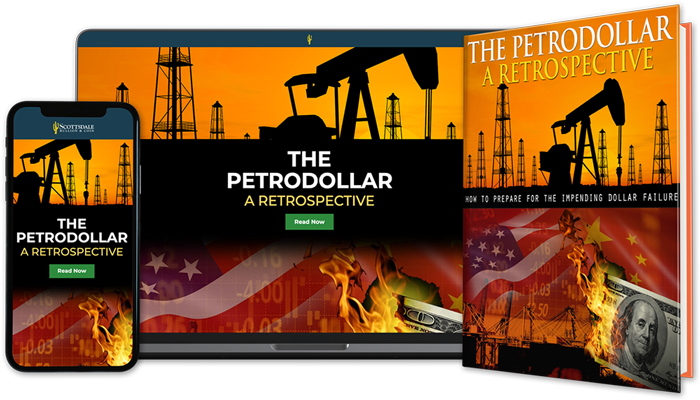 While most people know about the greenback’s prominence, not many have an in-depth perspective on the dollar’s ascent from a relatively unimportant currency to the sole world reserve currency. Understanding when and how the dollar became the world reserve currency can shed some light on its strengths, weaknesses, and future.
While most people know about the greenback’s prominence, not many have an in-depth perspective on the dollar’s ascent from a relatively unimportant currency to the sole world reserve currency. Understanding when and how the dollar became the world reserve currency can shed some light on its strengths, weaknesses, and future.
What is the world reserve currency?
The US dollar is recognized as the world reserve currency because of its foundational role in the world economy. It functions as a benchmark for other currencies around the globe and is widely considered the most stable, liquid, and trustworthy currency in circulation. Central banks, international institutions, and individual investors across the world hold significant amounts of USD to hedge against market instability and uncertainty. The dollar is the currency of choice for international purchases, settling trades, and preserving wealth.
When did the dollar become the world reserve currency?
The US dollar officially became the primary world reserve currency in 1944 with the signing of the Bretton Woods Agreement. Following the destruction of WWII, 44 Allied nations set out to rebuild the global economy. As the strongest superpower at the time, America took a leading role in the design of the new world order. However, this is just a snapshot of a larger timeline of crucial events.
The Dollar’s Rise to Reserve Status
The Pound’s Plunge
The economic strength of the British Empire secured the pound as the first world reserve currency. Although the Crown came out victorious in back-to-back World Wars, the economic repercussions were far too extensive for a full recovery. Following WWI, it was clear the pound was slipping from its top position. The only question remaining was which currency, if any, had the staying power to replace what was once the most powerful money system in the world.
Great Depression & WWII
Despite having no official structure, the economies of the world were extensively interwoven in the early 20th century. All illusions of independence were shattered when the US stock market took a nosedive on Black Thursday in 1929, dragging the rest of the world into an extended depression. This economic downfall combined with the aftermath of WWII gave the US the unique opportunity to build a world economy around its vision.

The Petrodollar: A Retrospective
How To Prepare For The Impending Dollar Failure
Get Report – It’s Free!Bretton Woods Conference
As mentioned before, the Allied nations gathered in the US in 1944 to discuss the future of global economics. The resulting Bretton Woods Agreement gave the rubber stamp approval for the dollar to become the world reserve currency. The economic and military might of the US made the dollar an obvious choice as the base currency. Under the new system, the dollar was backed by gold, and all foreign currencies were tethered to the dollar. The agreement also established the World Bank and International Monetary Fund.
Post-War Economic Boom
While other economies struggled through the mid-1950s, the US saw tremendous growth. The post-war economy had all the raw materials needed to succeed including technological advancements, significant government funding, a well-educated and motivated workforce, and pent-up demand. This massive boom lasted for decades and earned the dollar a reputation as a stable and reliable world reserve currency. Institutional investors and central banks from around the world sought out the dollar for wealth building and preservation.
Nixon Shock & Rise of the Petrodollar
The US officially abandoned the gold standard in 1971 when President Nixon ended the convertibility of USD to gold. This controversial move, pejoratively referred to as the Nixon Shock, ended decades of gold-backing for the dollar and sent shockwaves of uncertainty throughout the world economy. The solution was to have Saudi Arabia, one of the world’s leading oil producers, conduct international oil transactions exclusively in USD. The resulting petrodollar system has upheld the dollar’s dominance ever since.
Suggested Reading: Petrodollar Timeline: Track New & Historic De-Dollarization Events
What was the world reserve currency before the dollar?
Before the dollar rose to prominence, the British pound sterling was the defacto world reserve currency. The British Empire’s economic power, geopolitical influence, military might, internal stability, and technological leadership solidified the pound’s prestige in the burgeoning global monetary system. Eventually, the British currency buckled under the immense pressure of two World Wars, marking the first and only failure of a world reserve currency thus far.
The transition from the pound to USD had a permanent impact on the trajectory of global finances. Domestic benefits included a sharp increase in dollar demand, heightened influence on the world stage, and better price stability. Overall, the world experienced one of the greatest economic booms in human history under the dollar’s leadership during what became known as the “Golden Age of Capitalism”.
The US dollar has retained its status as the world’s reserve currency for a considerable time, allowing us to operate with substantial deficits. Should this change, it would likely lead to levels of inflation unprecedented in our experience.–Sr. Precious Metals Advisor Steve Rand
Will the dollar be replaced as the world reserve currency?
The US dollar remains the primary world reserve currency, but there’s no guarantee it will maintain that status. The global economy will always gravitate toward the most stable, liquid, and reliable currencies when searching for foundation. For the past several decades, the greenback maintained enough global confidence to keep its leading role. However, the tides are turning violently against the dollar as countries actively decouple from US influence. The process of de-dollarization is speeding up as the world sees the dollar as a liability instead of an asset. If and when another currency fulfills the needs of the world economy more convincingly, the US dollar might fall from its position as the world reserve currency.
Investing in a Post-Dollar World: Find out what you should own if the dollar collapses. Hint: It’s most likely NOT what you’re invested in right now.
Stay Updated to Stay Protected
Knowing when the dollar became the world reserve currency is only half the battle. Investors need to stay updated on the latest developments to preserve their wealth. Fortunately, we’ve put together a FREE Petrodollar Report with real-time updates so you can easily track the dollar’s performance.

